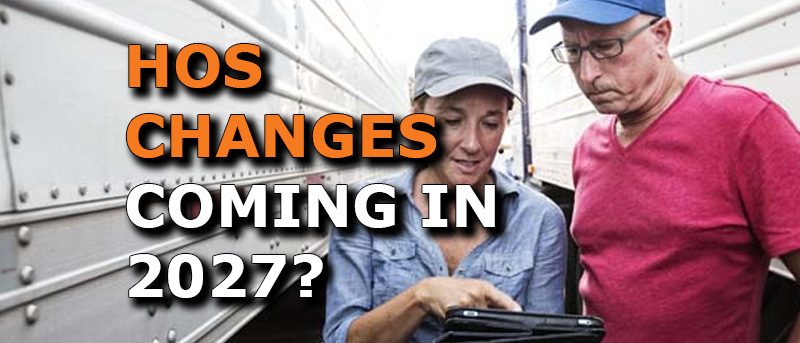Can Flexible Sleeper Rules Reduce Fatigue? FMCSA Seeks Answers in 2026 Study

The Federal Motor Carrier Safety Administration (FMCSA) is moving forward with pilot programs designed to evaluate more flexible Hours of Service (HOS) rules for truck drivers.
One of the most closely watched is the Flexible Sleeper Berth Pilot Program, which will test alternative ways drivers can split their required rest periods in the sleeper berth.
FMCSA hopes these studies will generate reliable, data-driven insights into whether expanded flexibility can reduce fatigue, improve driver safety, and ease work-life balance—without compromising safety standards.
Let’s take a closer look.
Current Sleeper Berth Rules
Under the current HOS rules (last updated in September 2020):
- Drivers must take 10 consecutive hours off-duty before starting a new driving shift.
- The rules allow for a split-sleeper option:
- 7/3 split: At least 7 consecutive hours in the sleeper berth, plus 3 consecutive hours off-duty.
- 8/2 split: At least 8 consecutive hours in the sleeper berth, plus 2 consecutive hours off-duty.
Benefit: The shorter rest period in both options pauses the rolling 14-hour duty clock, giving drivers more flexibility during the day.
Why the Pilot Program Matters
FMCSA is now looking to expand those options. Under the proposed Flexible Sleeper Berth Pilot Program, drivers could test additional rest splits, including 6/4 or 5/5, to see if they provide the same or greater safety benefits.
Goals of the program:
- Collect Data: Gather hard evidence on how different split configurations affect driver fatigue and alertness.
- Safety First: Compare crash, inspection, and logbook data across different split groups.
- Work-Life Balance: Explore whether added flexibility improves scheduling, reduces stress, and helps drivers better manage family time.
What’s in the Pilot Program?
FMCSA will accept about 256 drivers into the Flexible Sleeper Berth Pilot Program. Participation will last four months per driver, broken into two phases:
- Baseline Phase (1 month): Drivers operate under the current sleeper berth rules.
- Exemption Phase (3 months): Drivers operate with expanded flexibility, such as 5/5 or 6/4 sleeper splits.
Drivers will be provided a smartphone and smartwatch to help track fatigue and performance. Data collected will include:
- ELD logs (Records of Duty Status).
- Crash and roadside inspection reports.
- Sleep quality (measured with wrist actigraphy).
- Psychomotor Vigilance Tests (PVT): Short daily reaction-time tests to measure alertness.
- Karolinska Sleepiness Scale surveys: Drivers rate how tired they feel.
- Pre- and post-study surveys.
FMCSA emphasizes that data will not be used for enforcement against carriers or drivers.
Split Duty Period Pilot Program
Alongside the split-sleeper study, FMCSA is also launching a Split Duty Period Pilot Program. This would allow drivers to pause their 14-hour on-duty clock for 30 minutes to 3 hours during a duty cycle.
Why this matters:
- Helps account for detention delays at shippers/receivers.
- Allows drivers to avoid heavy traffic congestion.
- Gives drivers extra rest opportunities to combat fatigue.
This program will follow the same four-month structure and data collection methods as the sleeper berth pilot.
Safeguards and Eligibility
FMCSA says it will actively monitor for shipper or carrier pressure that could force drivers to misuse these exemptions. Both carriers and drivers must meet strict eligibility criteria to participate, including:
Carriers must:
- Hold proper authority, registration, and insurance.
- Not be rated as conditional or unsatisfactory.
- Have low out-of-service rates and no recent enforcement actions.
Drivers must:
- Hold a valid CDL and medical card.
- Operate a truck with a sleeper berth.
- Agree to wear fatigue-monitoring devices and complete daily tests/surveys.
Timeline for the Pilot Programs
- Sept. 17, 2025: Pilot program details published in the Federal Register.
- Sept.–Nov. 2025: FMCSA will accept public comments on the proposal through Nov. 17, 2025.
- Early 2026: Data collection begins, with more than 500 drivers expected to participate across the two pilot programs.
- Late 2026–2027: Data analysis and safety review conducted by FMCSA and independent researchers.
- 2027 and beyond: Findings may guide updates to HOS regulations, potentially expanding split sleeper and duty pause options permanently.
What This Means for Drivers
These pilot programs could bring long-awaited flexibility to drivers’ schedules.
If the data shows safety is maintained—or even improved—FMCSA could allow new sleeper splits and 14-hour duty pauses, giving drivers more tools to fight fatigue and adapt to real-world challenges like detention time and traffic congestion.
Confused about Hours-of-Service?
In just over an hour, you’ll gain a complete understanding of HOS regulations, logging, exceptions, and ELD use—everything you need to pass inspections and avoid violations.
Enroll today for only $95 and protect yourself from costly violations.
Questions about DOT Compliance, Licensing, Audits, Programs, etc.?
Our DOT Specialists are here to help!
What are you searching for?
Is DOT Compliance your Top Priority?
Our DOT Compliance Programs ensure it is your top priority and keeps your business running.
Related Services
Subscribe to our Monthly Newsletter
Receive the latest transportation and trucking industry information about FMCSA and DOT Audits, Regulations, etc.
Related news
Trucking News
Get the latest trucking news on DOT Compliance, Licensing, Audits, and more!

Why a “Warning” Can Hurt More Than a Citation for New Fleets
For many new or small fleets, getting stopped at a weigh station or roadside inspection can be a nerve-racking experience—especially when you’re trying to maintain

Pennsylvania Announces Major Expansion of Truck Parking — 1,200 New Spaces Coming by 2026
For the first time in decades, Pennsylvania is taking coordinated action to tackle one of the trucking industry’s most persistent challenges: the shortage of safe

Breaking Down the AMERICA DRIVES Act: What Autonomous Trucking Exemptions Mean for the Future of Freight
With hopes to reshape the future of the American freight industry, Congressman Vince Fong (CA-20) introduced legislation aiming to provide an obvious exemption of traditional
